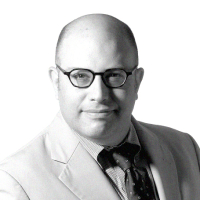The U.S. intelligence community is still trying to answer basic questions about the jihadists who tried to wipe out Iraq’s remaining Yazidis and who now threaten to overrun the capital of the country’s Kurdish provinces.
In a briefing for reporters Thursday, U.S. intelligence officials said the government is re-evaluating an estimate from early this year that said the Islamic State of Iraq and al-Sham (ISIS) had only 10,000 members. These officials also said intelligence analysts were still trying to determine the real names of many of the group’s leaders from records of Iraqis who went in and out of American custody during the U.S. occupation of Iraq.
While many U.S. officials have warned publicly in the last year about the dangers posed by ISIS, the fact that the U.S. intelligence community lacks a consensus estimate on its size and the true identities of the group’s leadership may explain why President Obama over the weekend said the U.S. was caught off-guard by the ISIS advance into Kurdish territory.
That said, the U.S. intelligence community assesses that ISIS poses a particularly difficult problem. One American official said ISIS had attracted thousands of foreign fighters to Syria and Iraq, some of whom had returned to their home countries and formed terror cells in Europe.
U.S. intelligence officials said the Islamic State makes frequent mention of its intent to attack the U.S., though officials said there is no evidence yet that its operatives have the skills of Al Qaeda in the Arabian Peninsula's (AQAP) master bomb maker Ibrahim al-Asiri. AQAP has tried to bring down U.S.-bound airliners three times using bombs he helped design or build.
ISIS has also proven that it’s practical and can adapt to changing battlefield conditions. Despite taking Iraq’s second-largest city, Mosul, in early June, ISIS was smart enough not to try an assault on Baghdad this summer. ISIS would likely lose that battle, according to U.S. intelligence officials, because the city has more than 5 million Shiite Arabs, who belong to the sect of Islam the Sunnis in ISIS consider apostate. While ISIS has refrained from a military assault on Baghdad, U.S. intelligence officials believe the group has cells in place in the Iraqi capital capable of being activated for a future attack or acts of terrorism.
For the government of Iraq, ISIS will remain a long-term challenge. One intelligence official said the group could be weakened if the Iraqi army got continued “external support,” including more arms, more training, and a steady feed of precise information on ISIS fighters, especially the kind of technical monitoring done with overhead and on-the-ground sensors that provide intelligence, reconnaissance, and surveillance.
President Obama has conditioned U.S. assistance for the Iraqi fight against ISIS on the formation of a more-inclusive government capable of luring away more moderate Sunni tribal leaders and politicians. One reason why the U.S. intelligence community, for example, has had trouble settling on a number for how many members are in ISIS is because other Sunni militias have fought alongside the group in its recent campaign through Iraq.
In fact, Susan Rice, Obama’s national security adviser, in a statement Thursday, linked the resignation of Prime Minister Nouri al-Maliki to the fight against ISIS. “These are encouraging developments that we hope can set Iraq on a new path and unite its people against the threat presented by [ISIS],” she said. “The United States remains committed to a strong partnership with Iraq and the Iraqi people.”
But reform of Iraq’s government in Baghdad does not diminish the threat ISIS will pose in the coming months. U.S. intelligence officials pointed out that ISIS had accomplished something al Qaeda and its affiliates had not: successfully holding territory it had conquered. In areas controlled by ISIS, basic government services like electricity and running water continue, these officials said.
Besides the holding of territory, another major accomplishment for ISIS has been in the propaganda war within the broader jihadist community. The group today poses a direct ideological challenge to al Qaeda, according to U.S. intelligence officials, because, unlike al Qaeda, it has decided to create an Islamic caliphate now. That caliphate factors into the group’s recruitment propaganda, which features a mix of gruesome violent images with more positive themes that show the promise of a return of Muslim empire.
The U.S. intelligence officials said ISIS was winning the social-media war with al Qaeda, often finding tens of thousands of Twitter accounts to retweet their messages. In some cases, other jihadists have expressed support for ISIS as well. In July, the jailed leader of Indonesia’s hard-line Jamaah Anshorut Tauhid organization called on followers to support ISIS. The intelligence officials added that some members of al Qaeda's core and its affiliate in North Africa have also expressed support for ISIS, despite the group’s war of words with al Qaeda’s leader, Ayman al-Zawahiri.
But U.S. intelligence officials say the secret to defeating ISIS may be to wait for its overreach to catch up with it.
“They are fighting on too many fronts and they are outnumbered,” one official said. He said the group could be weakened “if it is faced with a competent force,” applying continued pressure, and that it would get weaker still if some of the Sunni groups that have joined it in an uncomfortable marriage of convenience start to peel away.
And while the group is awash with money now from looted banks, kidnapping, smuggling, and co-opting northern Iraq’s oil industry, it doesn’t have enough cash to sustain the population it’s governing, which could eventually create internal pressures, the officials said.
If the group is driven back, however, officials believe it would simply revert to its hard-core terrorist roots, shrinking to small cells of closely knit fighters, as it did when U.S. counterterrorism forces beat it back from 2006 to 2007, waiting for the next opportunity.
“They’re a tough, disciplined group,” one official said.
—Kimberly Dozier contributed to this report.






